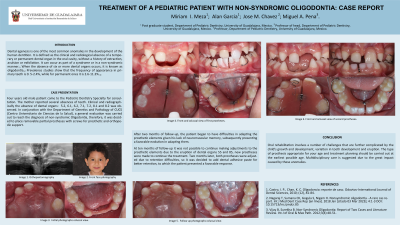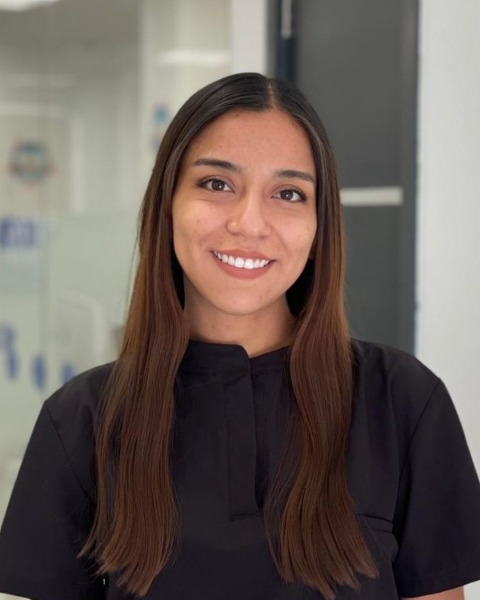Oral Pathology
451 - Treatment of a Pediatric Patient with Non-Syndromic Oligodontia


Miriam i. Meza
Student
Universidad de Guadalajara
Univesity of Guadalajara
Guadalajara, Jalisco, Mexico- MP
Miguel Peña, Pediatric Dentistry Specialist
Universidad de Guadalajara
- HA
Hugo Aceves, Pediatric Dentistry Specialist
Universidad de Guadalajara
- JC
Jose Chavez, Pediatric Dentistry Specialist
Universidad de Guadalajara
- AG
Alan Garcia, Student
Universidad de Guadalajara
- JC
Jose Chavez, Specialist in pediatric dentistry
Coordinator of the Specialty in Pediatric Dentistry
Universidad de Guadalajara
Guadalajara, Jalisco, Mexico
Presenting Author(s)
Co-Author(s)
Program Director(s)
ABSTRACT
Introduction: Dental agenesis is a common anomaly in the development of human dentition, characterized by the clinical and radiological absence of a dental organ, either temporary or permanent, in the oral cavity, with no history of extraction, avulsion, or exfoliation. It can occur as part of a syndrome or non-syndromic, and when the absence affects six or more dental organs, it is termed oligodontia. Prevalence studies indicate a frequency of 0.5-2.4% in temporary teeth and 2.6-11.3% in permanent ones.
Case Presentation: A 4-year-old male patient presented to the Pediatric Dentistry specialty with multiple missing permanent teeth. A comprehensive evaluation with the Department of Genetics and Pathology at CUCS led to the diagnosis of non-syndromic oligodontia. The decision was made to provide removable partial prostheses with expansion screws for prosthetic and orthopedic support.
Results: After two months of follow-up, the patient faced challenges in adapting to the prosthetic elements due to the lack of neuromuscular memory, but subsequently showed a favorable evolution in adaptation. Ten months later, a significant improvement was observed; however, a new prosthesis was deemed necessary due to the eruption of a molar and the expansion screws reaching their maximum opening.
Conclusions: Oral rehabilitation in cases of dental agenesis poses challenges, particularly in children due to their growth and development, and eruption. Appropriate prosthesis selection and treatment planning should be undertaken at the earliest age possible. A multidisciplinary approach is recommended due to the significant impact of these anomalies.
Identify Supporting Agency and Grant Number:

.jpg)